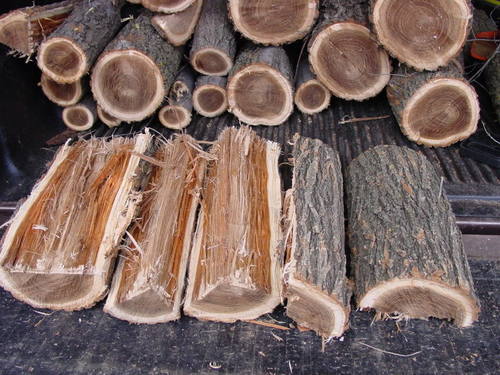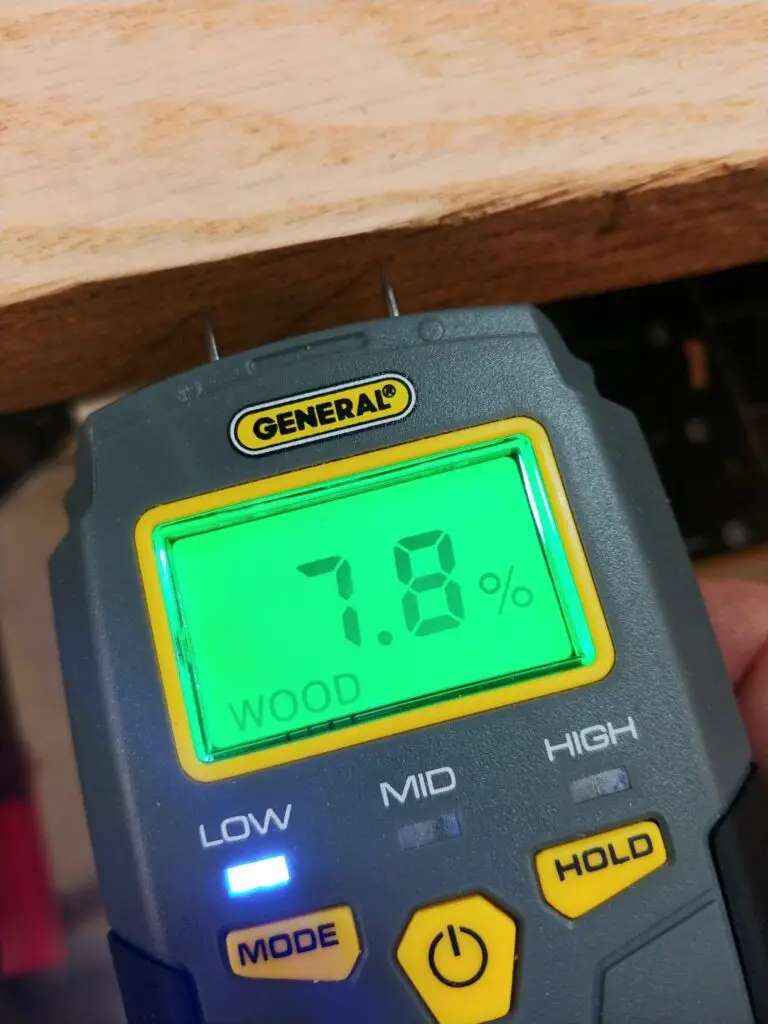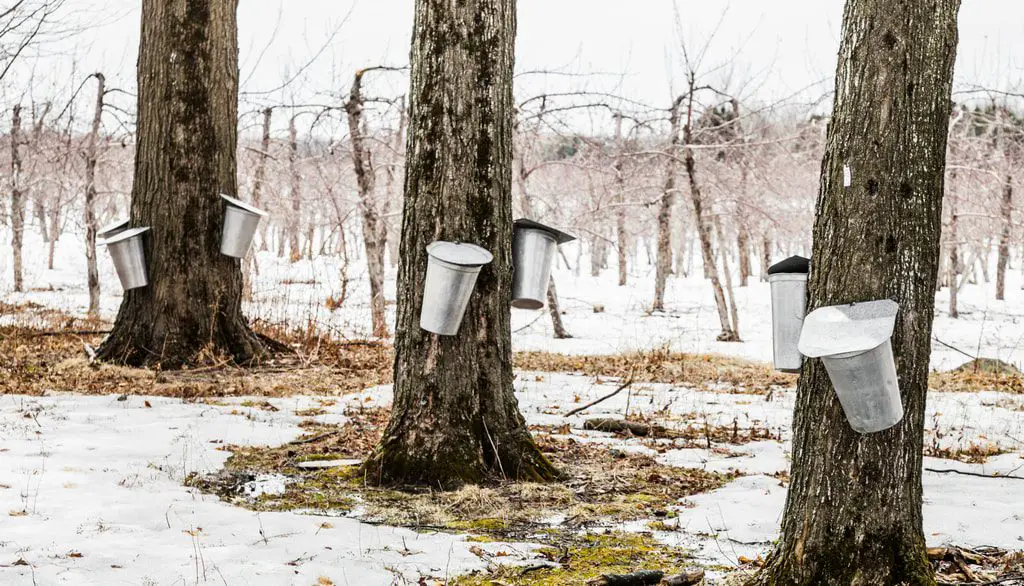Maple firewood is a high-quality option because of its high heat production, low smoke generation, sweet smell, and ease of splitting. However, it has some downsides, such as a higher sap content and cost than some other hardwoods.
I have put together this guide to highlight all the pros and cons of using Maple as a firewood. It is one of my go-to firewood, and I would happily add it to my winter stockpile.
Table of Contents
Summary
- BTU: 18-25 million BTU/cord
- Weight: 3900 lb/cord
- Seasoning Time: 12-24 months
- Splitting Difficulty: Easy
- Sap Content: Moderate
- Smoke: Low
- Smell: Sweet and Pleasant
Overall, Maple is an excellent firewood. Although some species have a lower heat production in the 18 BTU range, it gets as high as 25 million BTU/cord. This combined with its low smoke generation, sweet smell, and easy to split, puts it in the top class.
However, there are some genuine downsides. The most apparent is the cost. Maple can cost between $350 and $450 per cord, depending on your location and the time of the year. It can also take between 12 and 24 months to season so you do need to plan ahead.

Heat Production
The heat generation of Maple is quite good, but it does vary depending on the species. The lowest heat-producing variety is red Maple which has a 30% lower BTU than sugar maple.
Maple can be split into two categories – hard Maple (sugar) and soft Maple (red, silver, and bigleaf). You can see how the hard Maple has a higher heat production than the soft maple alternatives.
- Red Maple – 18 million BTU/cord
- Silver Maple – 19 million BTU/cord
- Bigleaf Maple – 23 million BTU/cord
- Sugar Maple – 25 million BTU/cord
This is still sufficient heat to warm your home in winter without needing to stockpile too much additional wood. You will often find Maple mixed into a blend of firewood with faster burner and higher heat generation options.
Smoke Production
Maple doesn’t produce much smoke. This makes it ideal for indoor fireplaces so that you don’t spread smoke throughout your home. You must ensure it is correctly seasoned with a moisture content of less than 20%. Green woods produce significantly more smoke than dry firewood.
Sugar maple does produce more smoke than the other varieties, but I would still classify it as a low-smoke firewood.
Seasoning Time
Maple firewood can take between 12 and 24 months to season, similar to other hardwoods. This means you must prepare your firewood stockpile a year or two ahead of time and ensure that your storage area is well designed.
You can increase the drying rate by improving the airflow through the stacks by creating space and adding a roof to prevent rain or moisture. The size of your split logs also speeds up the seasoning process – smaller logs have a higher surface area and will dry faster.
The seasoning time for Maple depends on your location and temperature.
I personally recommend this General Tools Moisture Meter. It allows you to accurately gauge how wet your firewood is and whether it is sufficiently seasoned. Over time you can also see how quickly the moisture is dropping and how much longer you need to keep your firewood dropping until it is seasoned and ready to burn.
Press the sharp pins into the wood and you will quickly see the readout show the moisture ranging from 5% to 50%. It also has a Low/Mid/High indication depending on whether the wood is dry enough, so you don’t need to remember the actual values.

Burning Smell
I find the smell of maple burning to be delightful. It is sweet and subtle without being overpowering. You can smell unique maple syrup hints through the smoke. Because the smoke production is low and the wood is relatively slow-burning, you don’t need to worry about the smell overpowering your home. This makes maple ideal for heating your home in winter.
Maple certainly makes my top ten list of the best smelling firewood.
Maple is also famous for smoking meats such as poultry or pork and is especially renowned for turkey.
Creosote Buildup
Creosote is a black buildup that can occur in your chimney from unburnt wood. It is particularly evident in softwoods like pine and can block your chimney and even start fires.
Maple does not produce much creosote, as long as it is properly seasoned to remove the sap. Green wood produces more creosote than seasoned wood, so resist the urge to burn your maple firewood unless its moisture content is under 20%.
However, it is recommended that you clean your chimney annually regardless of the type of wood you choose to eliminate this risk.
Splitting
I have never had any trouble splitting maple logs into smaller firewood. It does not have any issues in splitting like Black Locust or Elm. The soft maples like red and silver are particularly easy to process, but even the sugar maple doesn’t is relatively easy. You won’t have any problems if you have a proper splitting axe/maul or a log splitter for larger diameter wood.
You will find knots in maple wood, especially around the tree’s base, where the bottom limbs have grown. This will take some more effort to process.
Different Types/Species
There are more than 125 different species of maple trees worldwide, with just 13 native to the United States. The most common varieties are:
Boxelder
Boxelder is the most common species of Maple in Northern America. It can grow to 80 feet tall.
Red Maple
Red Maple is a popular option for urban gardens as it only grows to 50 feet tall, and its leaves turn a gorgeous red in the fall that is spectacular to see. Red Maple has the lowest heat generation of these five common species.
Silver Maple
Silver maple can grow up to 80 feet tall and is used as a shade tree because it grows fast. Silver maple is classified as soft and not as desirable as a firewood as sugar maple.
Bigleaf Maple
Bigleaf Maple grows extensively on the West Coast of North America and is the largest growing tree that can reach up to 150 feet in highly favorable conditions.
Sugar Maple
Sugar maple is the most commonly used tree for producing maple syrup. It can grow up to 110 feet tall. It is the highest density wood with the highest heat production. Of all the species in this list, sugar maple is the best firewood and makes my top ten list of the best burning woods.

Comparison to Other Woods
Here, I’ve taken some of the most popular firewoods to burn indoors and compared them to Maple firewood. You can see that Maple is an excellent firewood with high heat production, good quality coals, and is easy to split. It also smells nice and has a low smoke generation.
| Firewood | BTUs (source) | Ease of Splitting | Coals | Overall Quality |
| Green Ash | 20 | Easy | Good | Excellent |
| Maple, Soft | 18 | Easy | Excellent | Moderate |
| Maple, Hard | 25 | Easy | Excellent | Excellent |
| Bur Oak | 26 | Easy | Good | Excellent |
| Poplar | 14 | Easy | Poor | Moderate |
Maple is an excellent option as firewood and should be seriously considered as an addition to your stockpile. Its smoke generation is low but produces a pleasant, sweet smell that makes it ideal for indoor fires to warm your home all winter long.
FAQs
Can you burn Maple in a fire pit?
Yes, maple firewood is excellent for burning outdoors in a fire pit. The heat production is moderate to high depending on the variety, and the smoke generation is low, so you won’t smoke out your campsite. It also doesn’t crackle or pop as long as it is seasoned correctly to remove excess moisture and sap.
Maple also produces excellent coals that are well suited for cooking.
Can you burn Maple in a wood stove?
Yes, maple wood is well suited for burning indoors in a wood stove. Its low smoke means it won’t spread through the entire house, and its pleasant aroma is subtle and enjoyable. Depending on the species, you may find that soft Maple has a lower heat production, and you should stockpile more wood as appropriate for your location and weather conditions. Hard Maple, like sugar maple, is excellent for heating your home in winter.
How much does Maple firewood cost to buy?
Maple firewood is very popular and one of the more expensive firewood that can cost between $350 and $450 per cord, depending on the season and your location.
Final Thoughts
Maple is an excellent firewood. The hard maple species of sugar maple is one of my personal favorites as a firewood due to its high heat production, low smoke generation, pleasant smell, and ease of splitting. It comes at a higher cost, so you will need to consider this.
